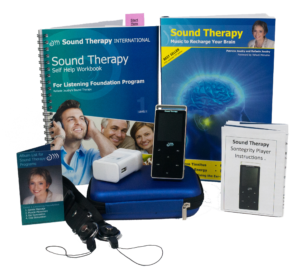Clinical depression with its symptoms of despair, guilt, exhaustion, pain and anxiety is a singularly debilitating condition. Severe sufferers struggle with a reason for living and some actually attempt suicide. Rising rates of teen suicide are an alarming warning that depression is out of control and growing rapidly. It has even been predicted that by 2020 depression will be a greater threat to human health than heart disease or cancer.
This can be seen socially as the reaction to the current state of the world, or at a biochemical level it can be seen as an environmental and chemical crisis, causing imbalance in brain chemistry. The effectiveness of antidepressant drugs certainly acts as powerful evidence that neurochemistry is a major causal factor.
Chemistry can be changed through psychological attitude, by drug treatment, or by a gentle vibrational stimulation, to bring about balance, such as that delivered in Sound Therapy.
So which parts of the brain are involved, and how can a balance be achieved, naturally? The brain of a depressed person is simply much less active than normal and this can be seen on an MRI. There is less going on than there needs to be for healthy functioning.
This would account for the general feeling of lethargy, slowness and lack of excitement a depressed person feels. The part of the cortex concerned with conscious emotion is over active, while the part concerned with generating action is under active. This results in the depressed person feeling devoid of any impetus or inspiration to do anything, while being swamped with emotion.
It is an interesting fact that when asked to think of something sad, women generate more activity in their emotional brains than men do. This increased power of emotional imagination may make women more easily prone to depression than men.
The neurotransmitter, dopamine, is an essential factor for physical motivation and the ability to get up and go. A lack of dopamine is seen in Parkinson’s patients and accounts for their tremor and their inability to generate the desired physical activities. Sound Therapy has been found to motivate people into more activity, and has assisted people with both depression and Parkinson’s, so it is possible that it helps to stimulate dopamine production. Excess dopamine on the other hand is found in hallucinogenic cases and is implicated in Schizophrenia. Hallucinogenic drugs are thought to work by stimulating the dopamine system. There are also reports of Sound Therapy helping people with schizophrenia, so it may also be that it helps to regulate excess levels of dopamine and keep the right balance in the brain.
Serotonin is the neurotransmitter responsible for feelings of happiness and well being.
When we look at the effects of serotonin it looks surprisingly like a list of the reported benefits of Sound Therapy. Listeners frequently report an increase of good feelings, serenity and optimism. We also know that Sound Therapy has a noticeable effect on sleep for most listeners. There have also been a considerable numbers of reports where chronic pain and high blood pressure have been beneficially affected. Some listeners have also reported weight loss due to a decrease in appetite. All this implies that Sound Therapy may be improving the production or uptake of serotonin. It could therefore be considered as a possible alternative to Prozac, which acts by enhancing serotonin levels.
Richard Davidson led a UW-Madison research team which found, for the first time, that a short program in "mindfulness meditation" produced lasting positive changes in both the brain and the function of the immune system. The findings confirmed the researchers' hypothesis: the meditation group showed an increase of activation in the left-side part of the frontal region. This suggests that the meditation itself produced more activity in this region of the brain. This activity is associated with lower anxiety and a more positive emotional state. Read more about Davidson’s work here:
https://www.waisman.wisc.edu/
The right brain is typically more involved with negative emotions and fearful, mournful or pessimistic feelings. People who experience severe left brain strokes often react as if they have undergone a terrible catastrophe, even if they only suffer mild disabilities as a result. In contrast, those who have their right brain affected by a stroke sometimes seem quite unaffected emotionally, remaining quite cheerful despite serious disabling effects. Sound Therapy may be achieving a similar result by activating and increasing the predominance of left brain function, allowing the relevant brain centres to take precedence over the parts linked to negative emotions.
To learn more, contact Sound Therapy International on 1300 55 77 96 or visit www.mysoundtherapy.com


